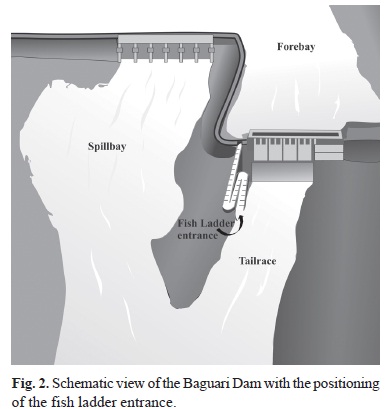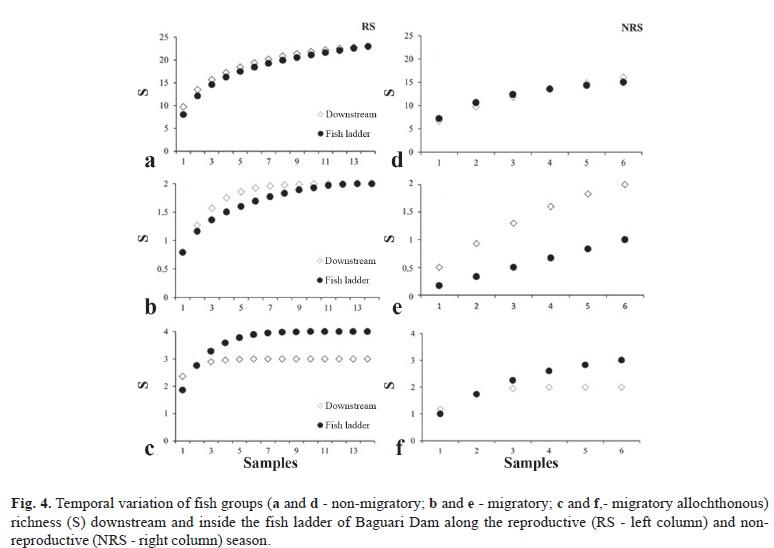Fish passages are considered the oldest management tool used to minimize the impact of blocking fish migratory routes by hydroelectric power plants. However, fish passages are being installed without specific criteria in Brazil, with severe consequences to the conservation of the local fish fauna. Therefore, basic data gathered for fish passages already constructed could contribute to define operational rules, in addition to offer subsidies to decision-making and design of future facilities. Thus, the fish ladder of Baguari Dam was evaluated regarding temporal distribution, attraction, and ascension of the local fish fauna. A total of 20 fish samples were conducted immediately downstream of the dam and inside the fish ladder, from January 2010 to June 2011. Seasonal variation in fish abundance and richness was registered below the dam and inside the passage, with higher number of migratory fish in the reproductive season (Kruskall-Wallis, p = 0.04 and p = 0.05). Furthermore, higher concentration of migratory allochthonous and non-migratory species was registered for the spill bay (Wilcoxon, p = 0.009 and p = 0.006) compared to the tailrace, where the fish ladder entrance is located. This result suggests low efficiency of the attraction system of the mechanism during the reproductive period. Once entering the fish ladder, migratory species apparently ascend the facility due to the similar distribution throughout different stretches. Generally, the results showed that an operational rule for the Baguari Dam fish ladder should consider running the facility only during the reproductive period, unless the objectives of the passage are well defined. The attraction system must be more precisely evaluated, using technologies such as radiotelemetry. Similarly, fish ascension also should be better analyzed to evaluate the time spent to ascend and its influence in the reproductive biology of the species using the ladder. Pit-tag system could be used to approach this analysis. It is expected that the discussion of these results would be useful for companies of the energy sector and for environmental agencies in Brazil, subsidizing decisions related to the management of fish passages already installed and to the construction of new facilities in the country.
Fishway; Migratory species; Operational rule; Seasonality; Vertical-slot










